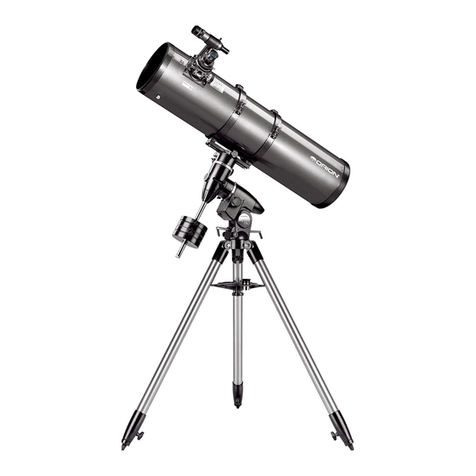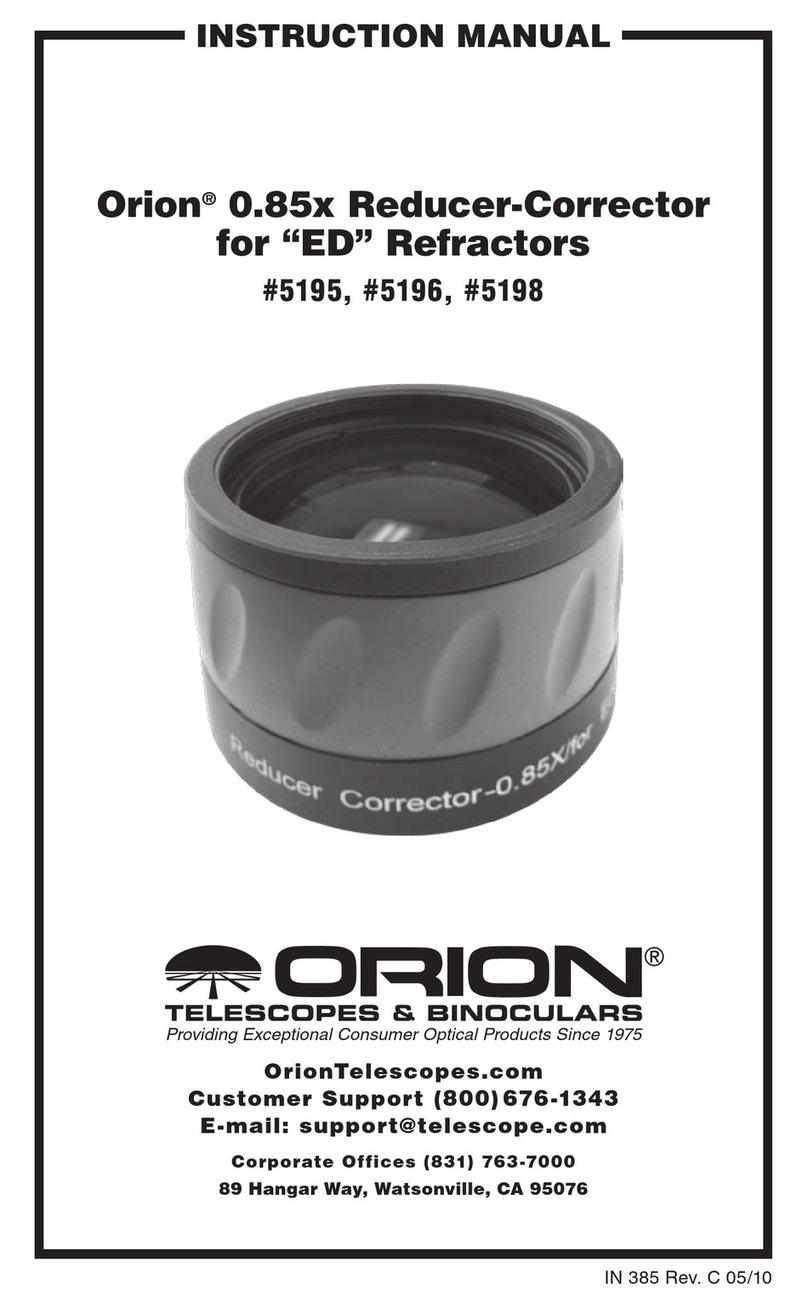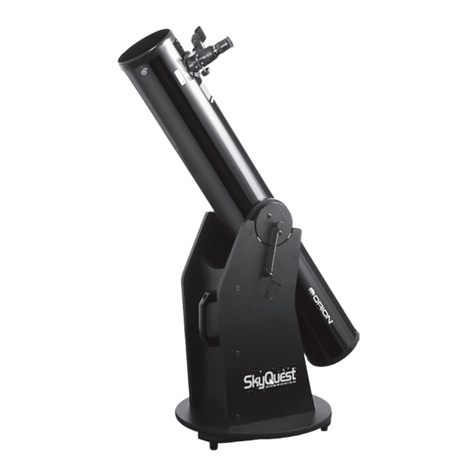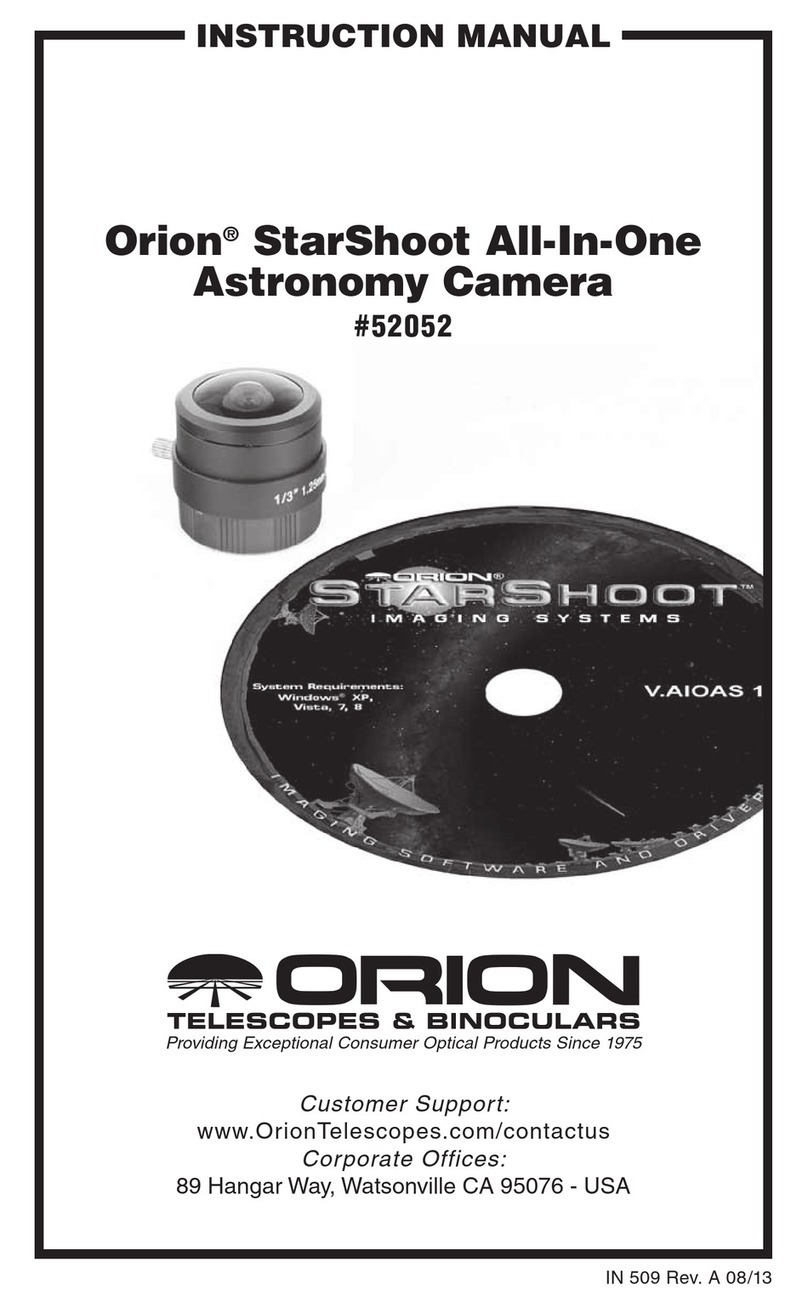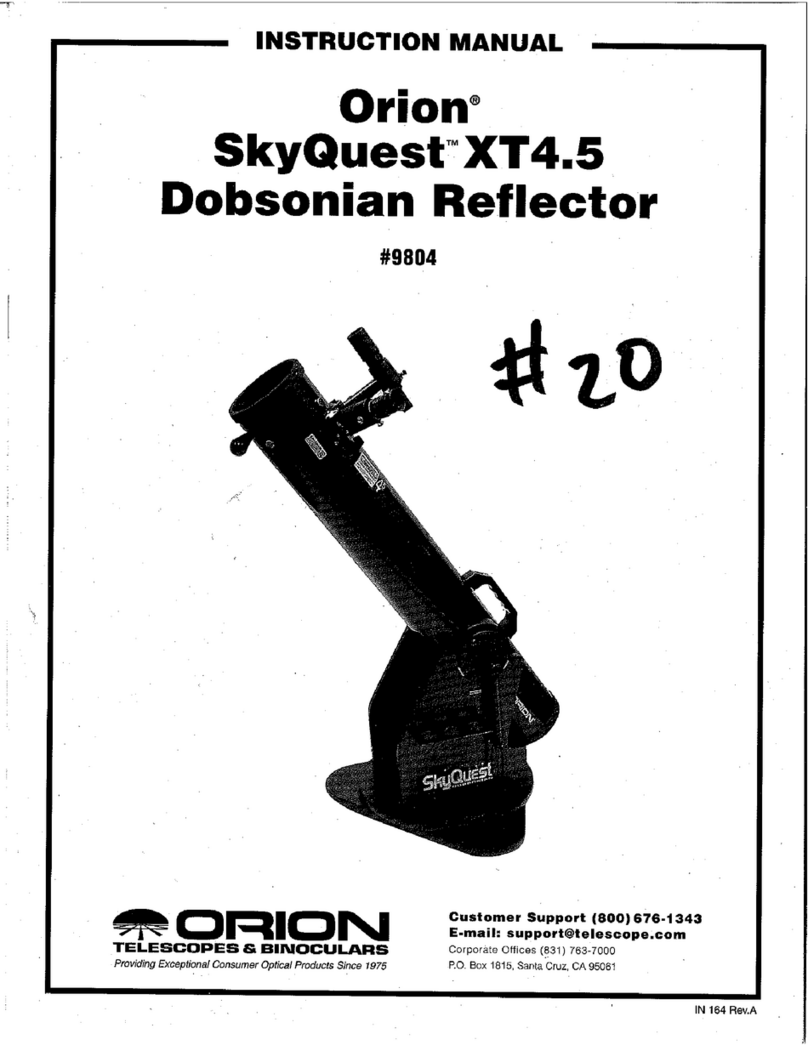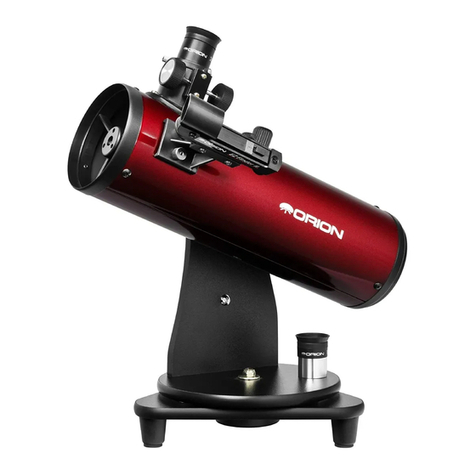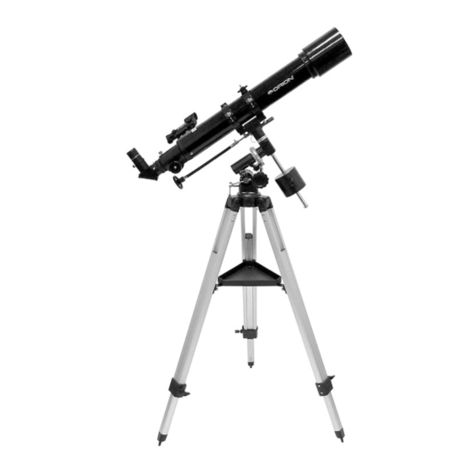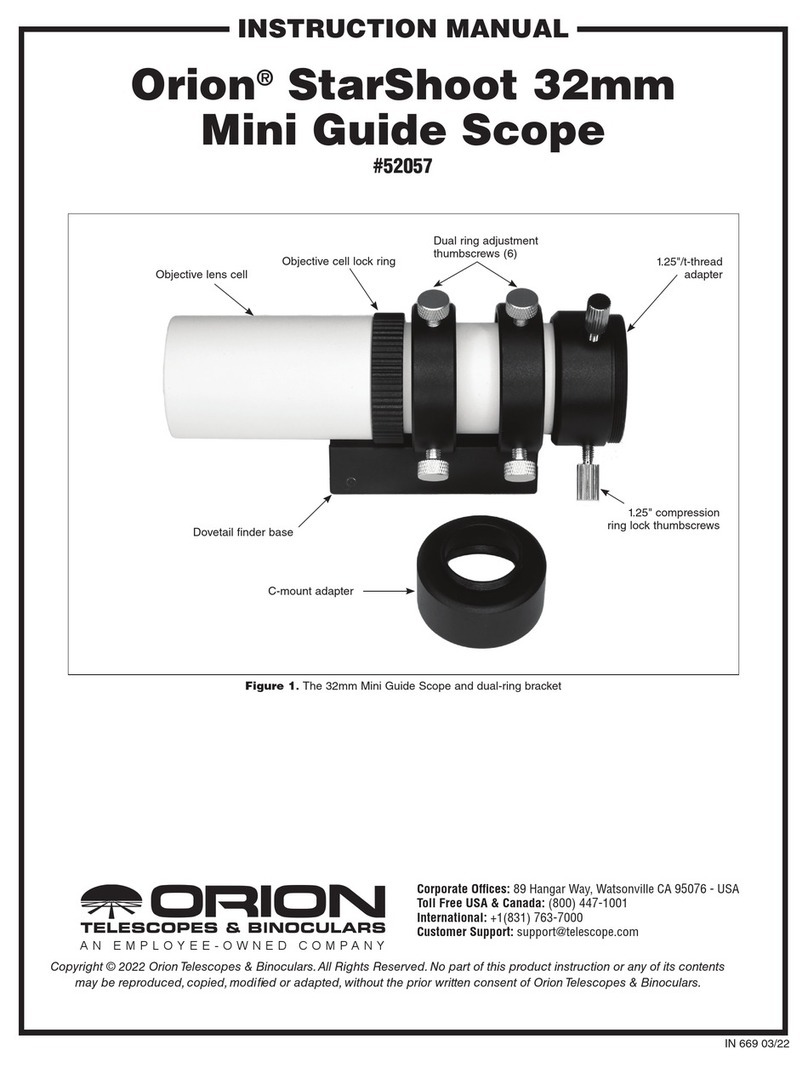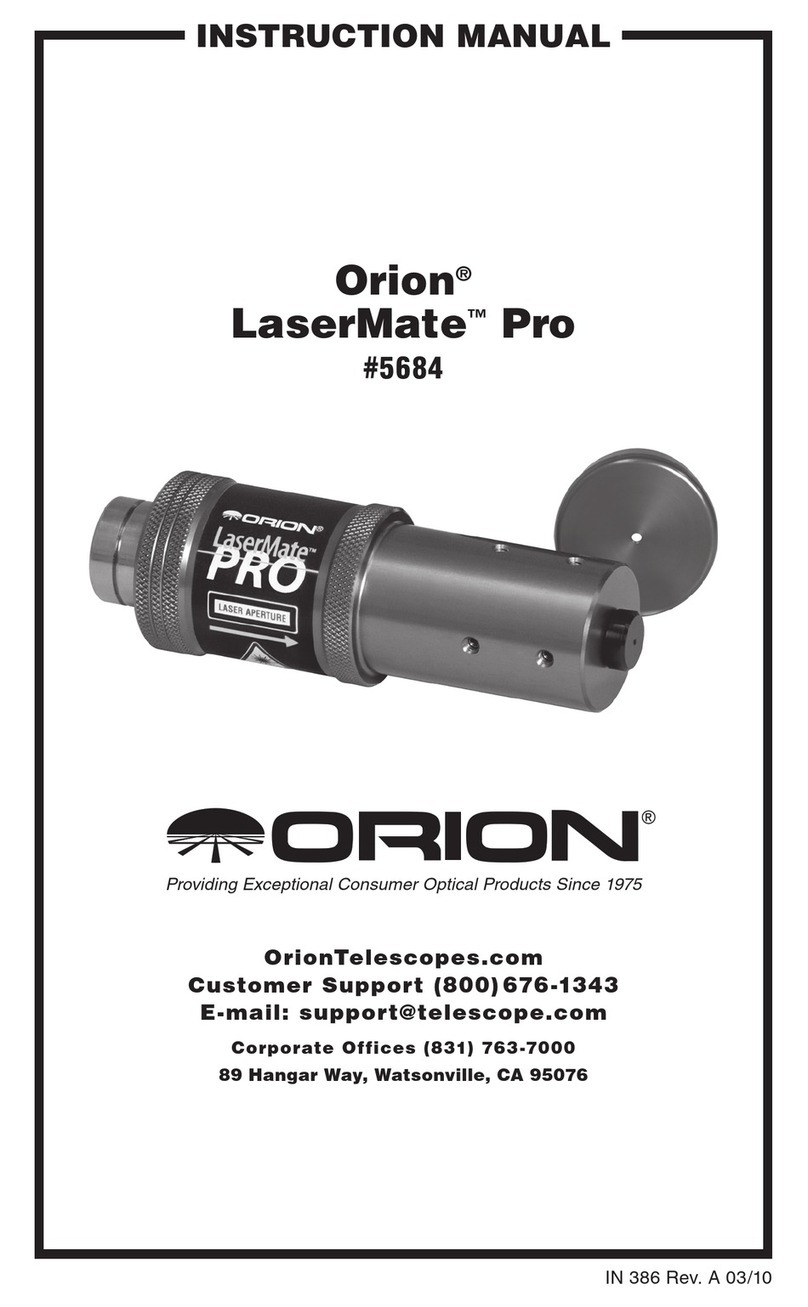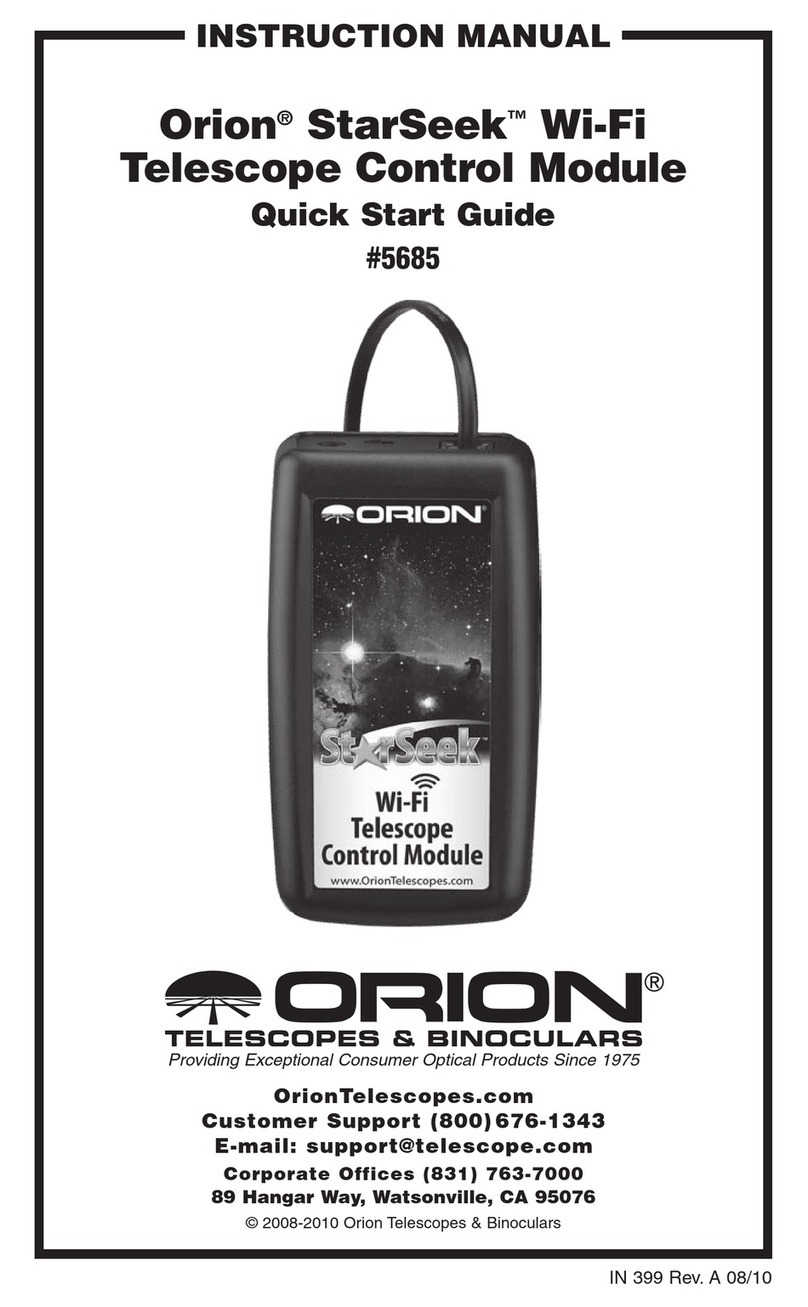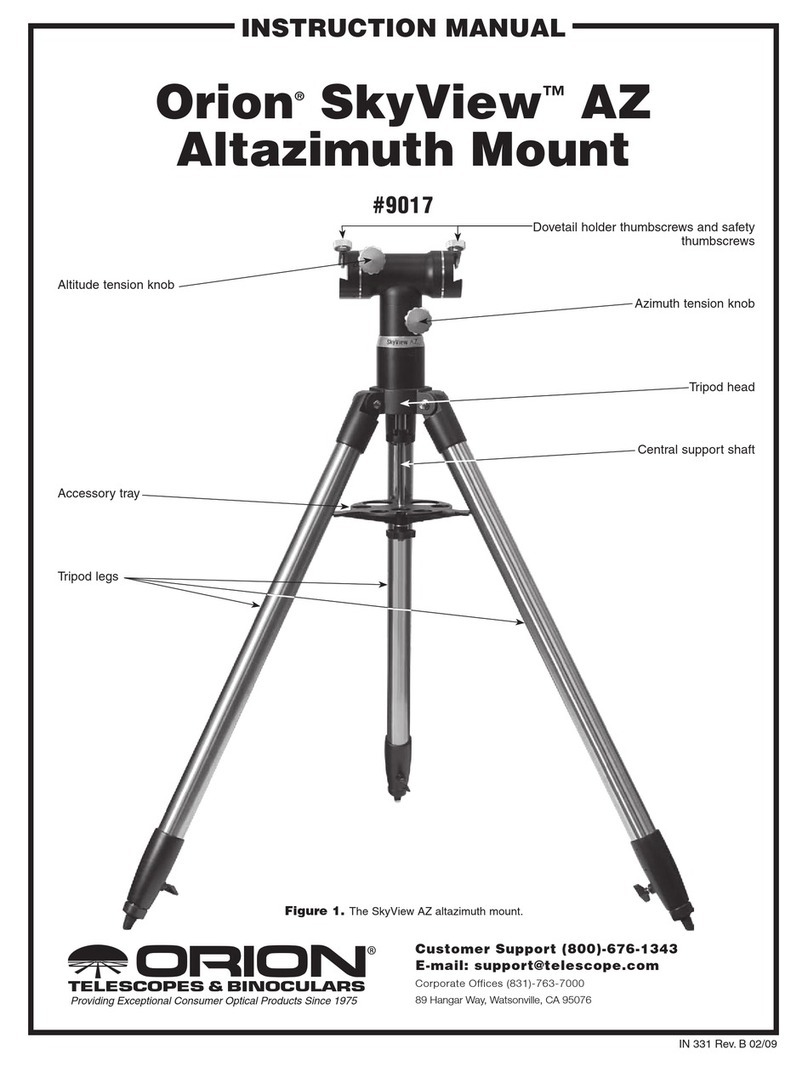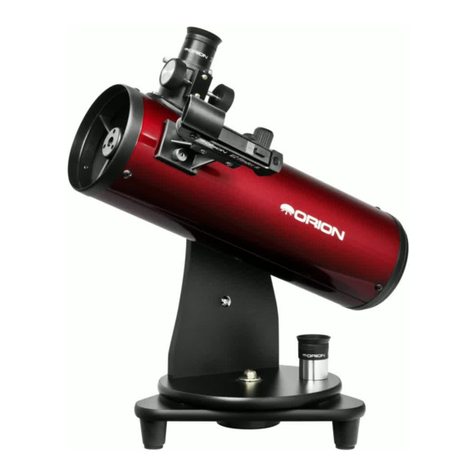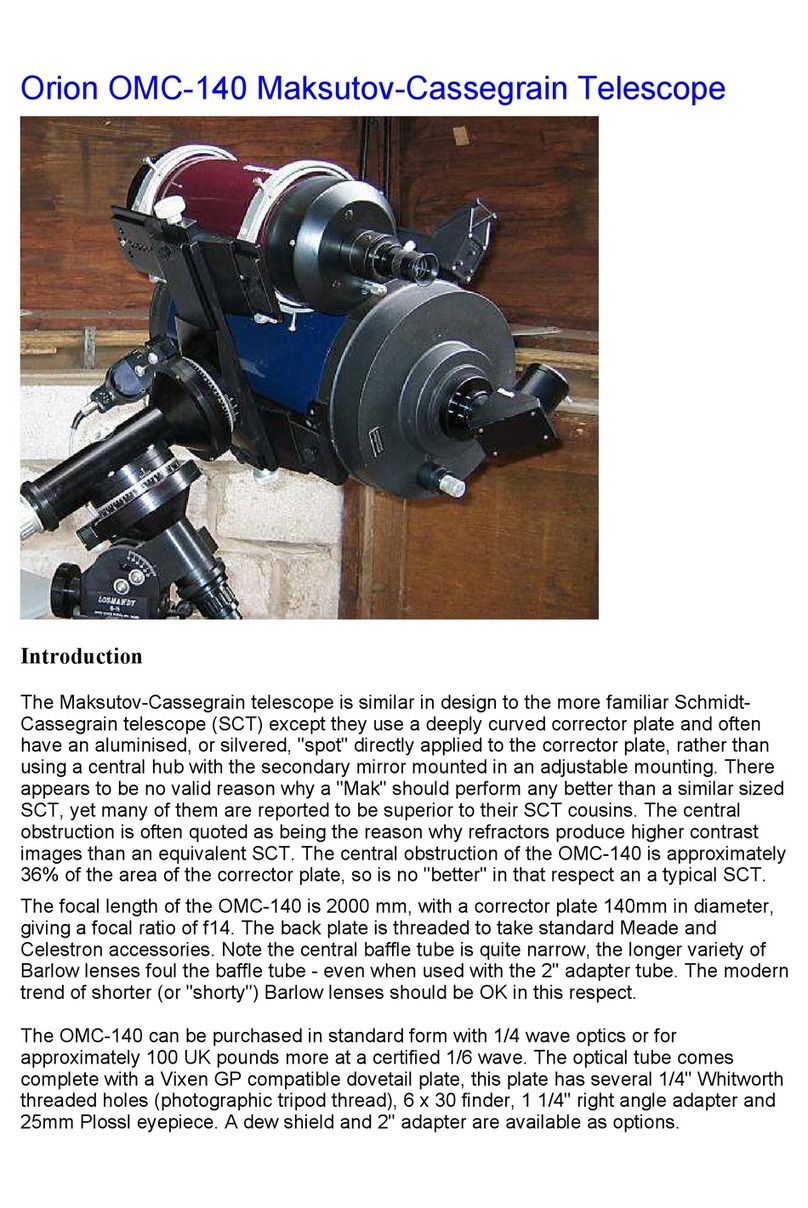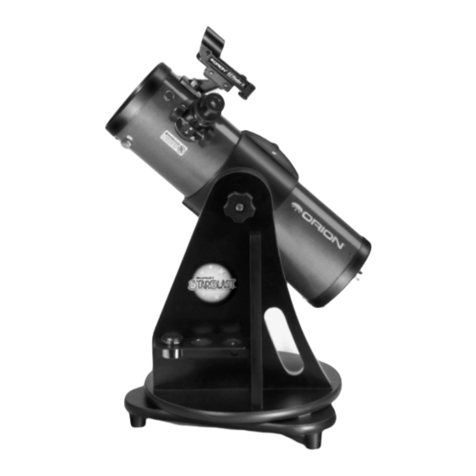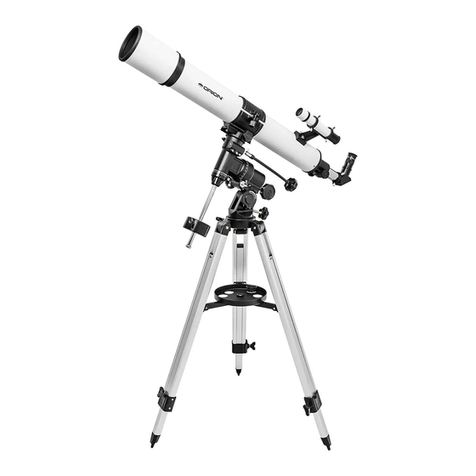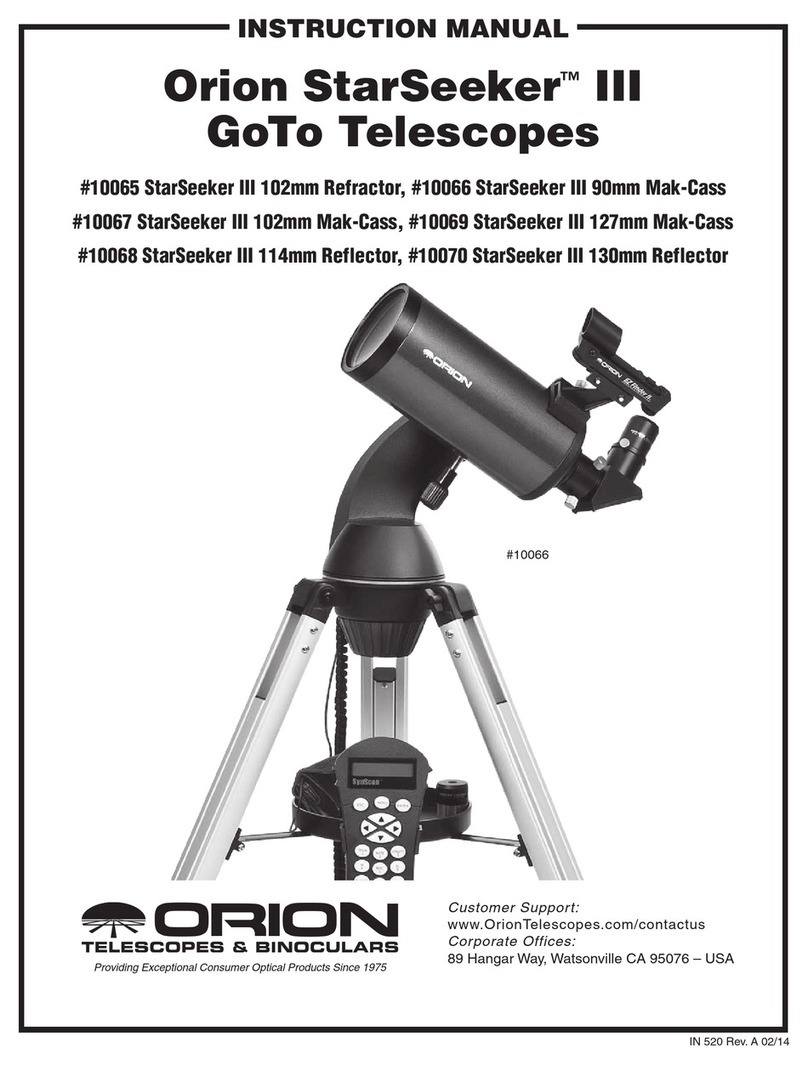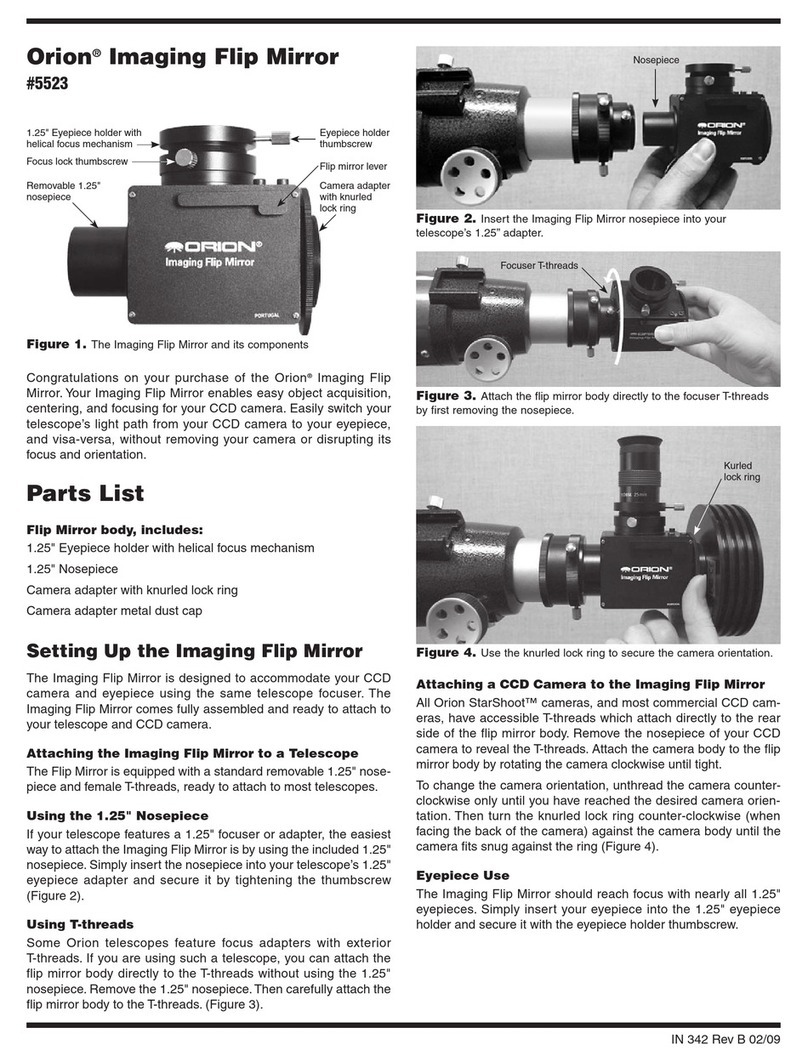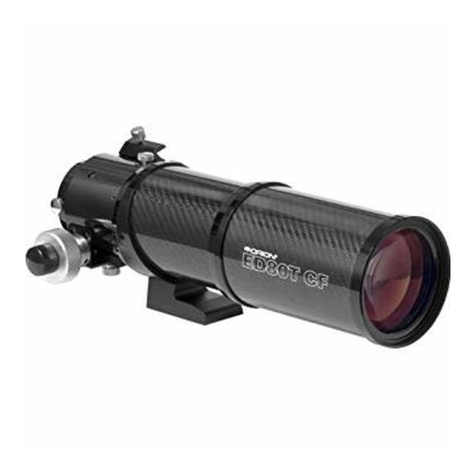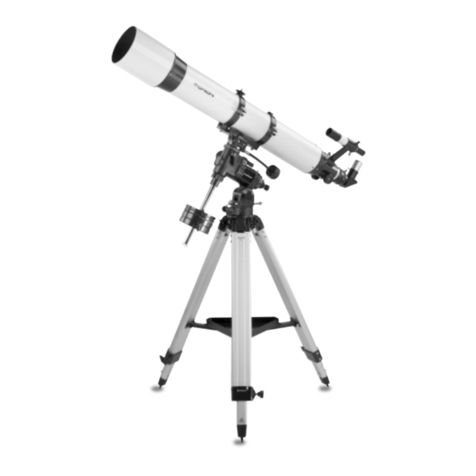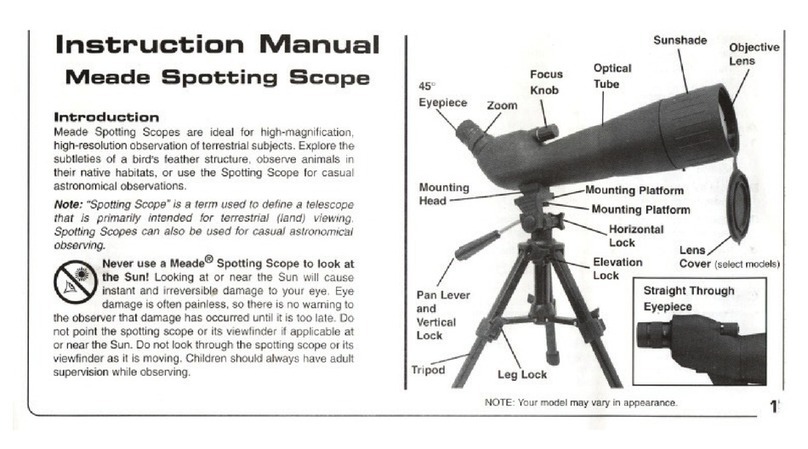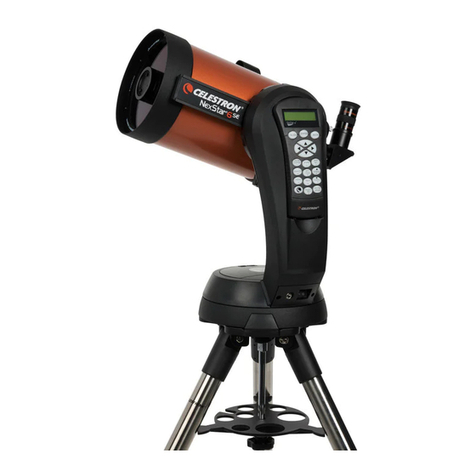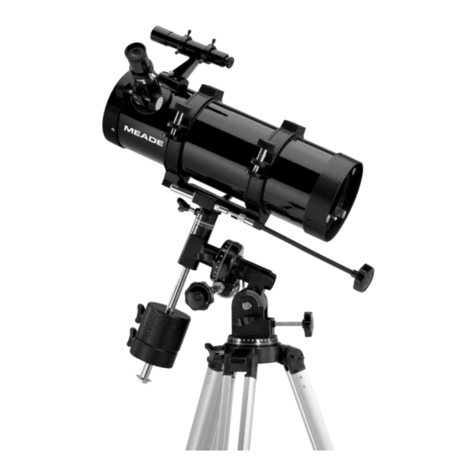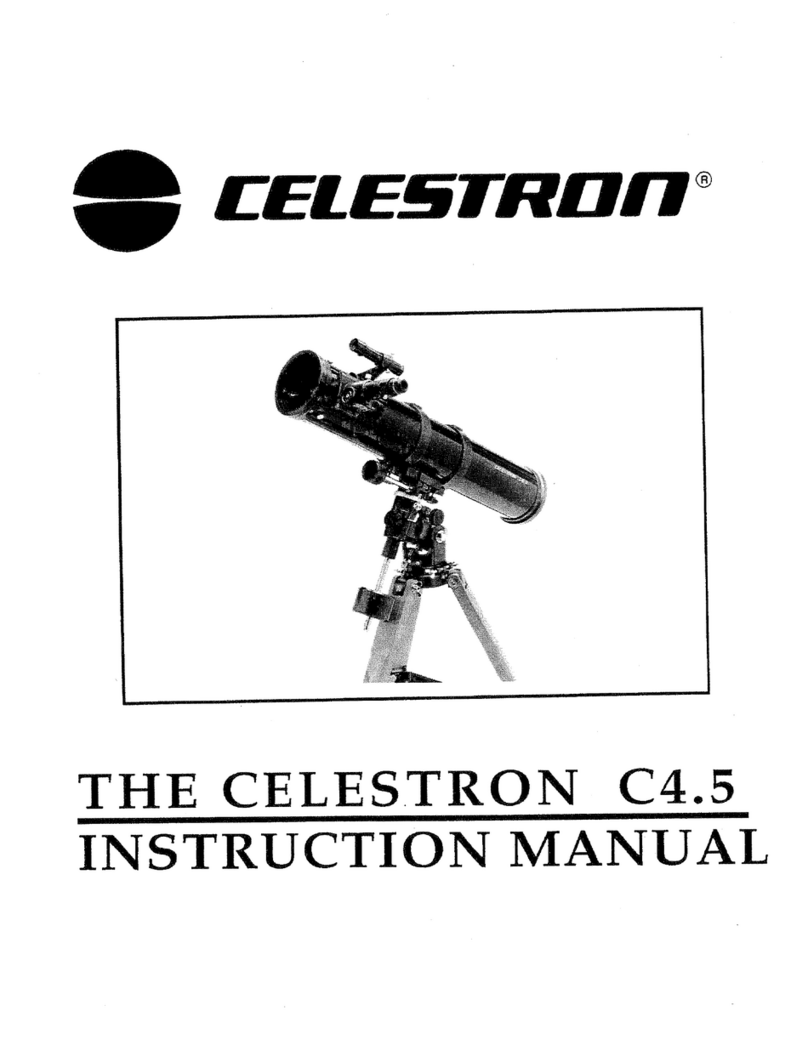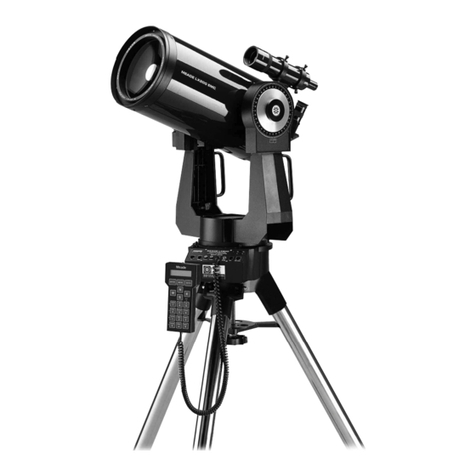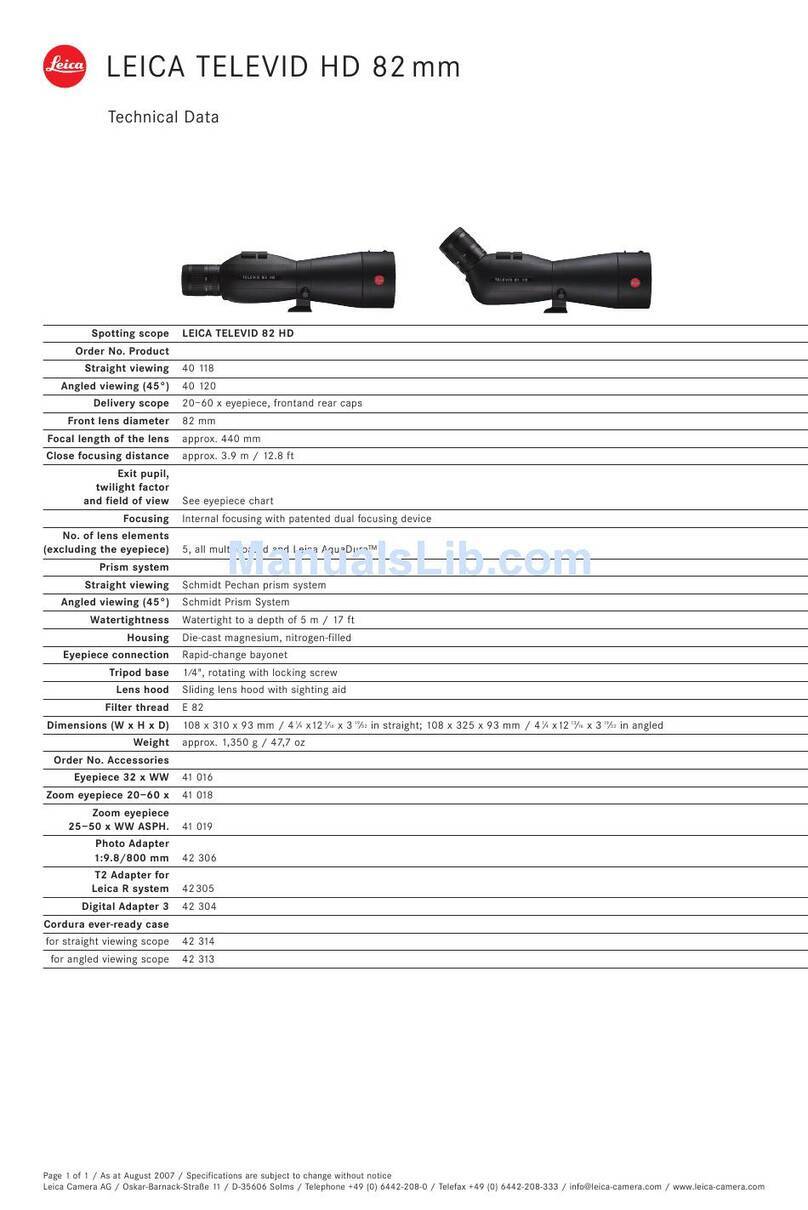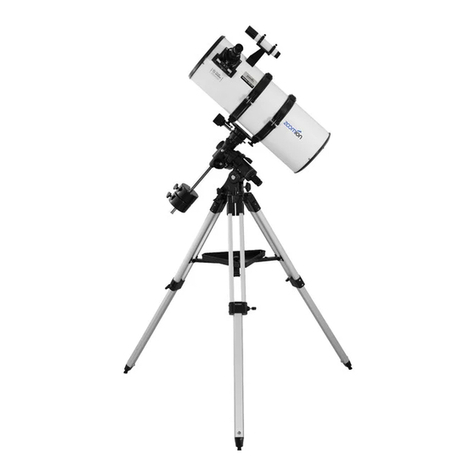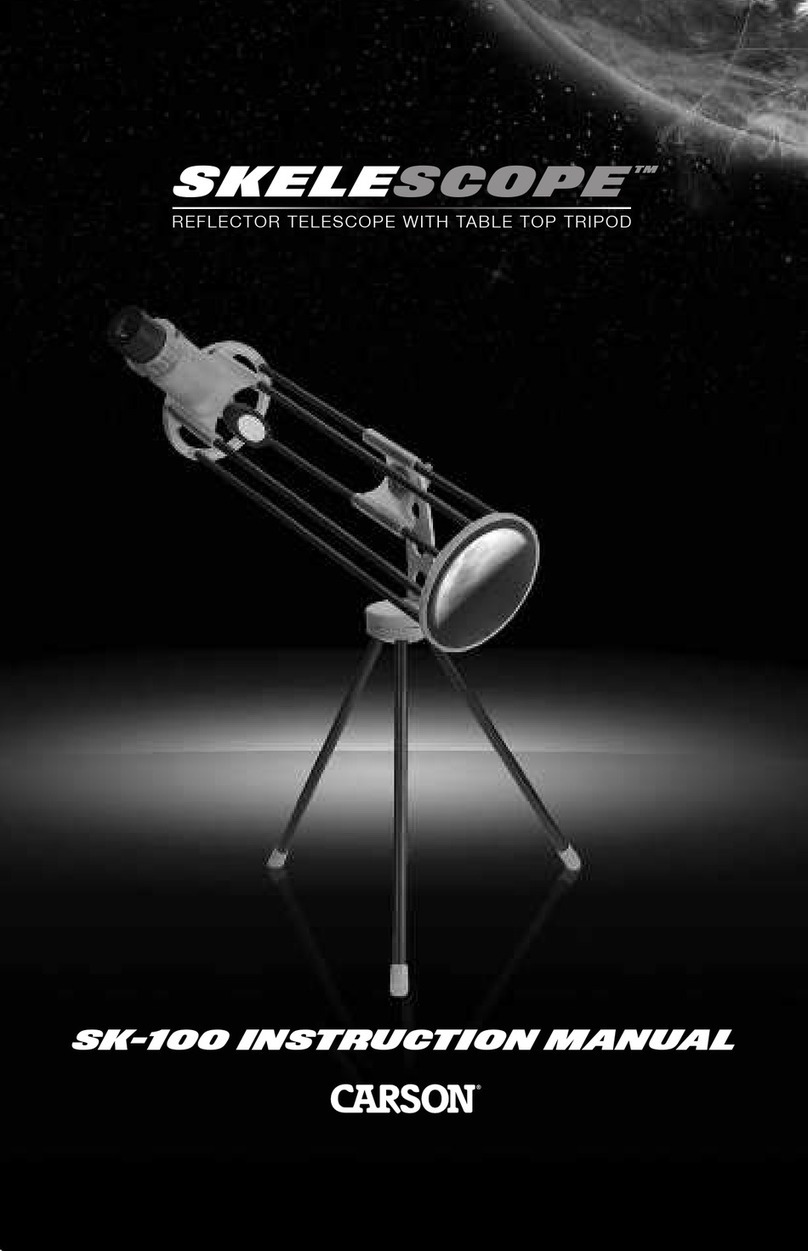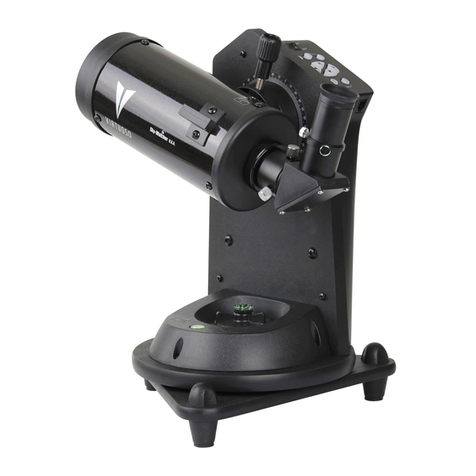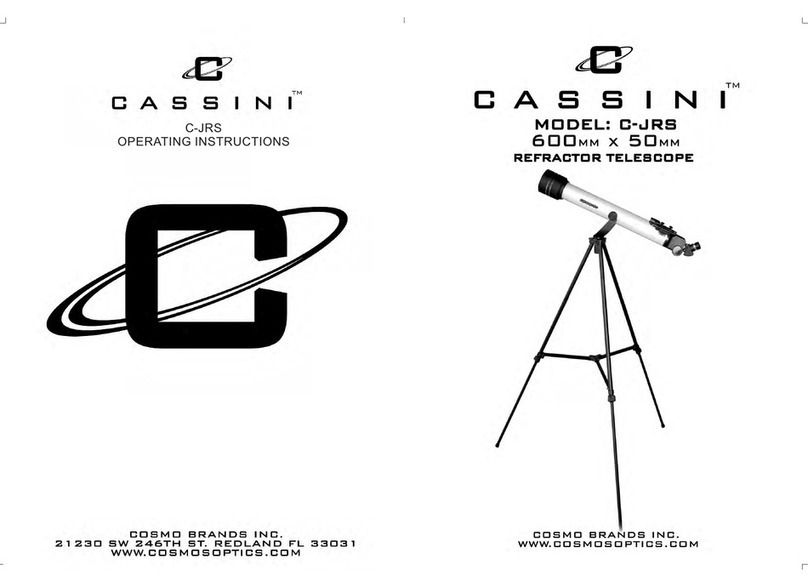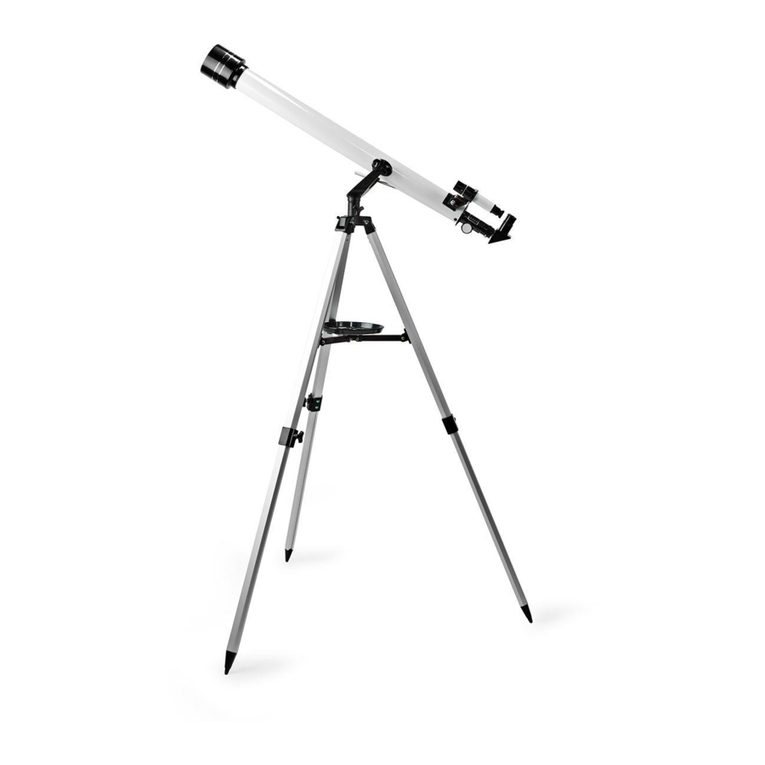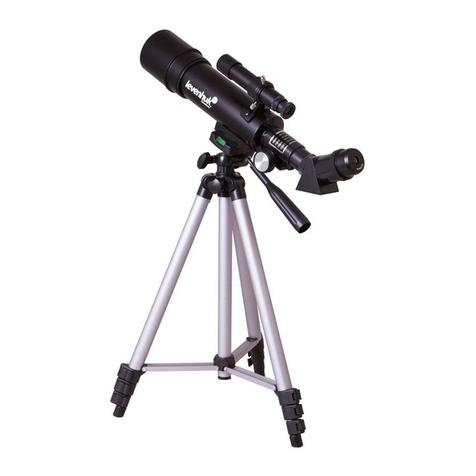
5
it outside under a starry sky. Be sure to allow the telescope
to equilibrate to the outdoor temperature for at least 1/2 hour
before using it; this ensures the best image quality.
Connecting the EON ED-X2 to a Telescope Mount
The EON ED-X2 refractors come with a pair of sturdy, hinged
and felt-lined tube rings and a Vixen style dovetail mounting
bar. The tube rings have a large clamp knob to secure them
tightly on the telescope tube.
Balancing the telescope can be done by moving the telescope
forward or backward within the tube rings, or by sliding the
dovetail mounting plate forward or backward in your mount’s
saddle
Observing with the EON ED-X2
To observe with the EON 85mm or 104mm ED-X2 refractors
you will need either a 1.25" or 2" diagonal and an eyepiece,
each sold separately. Because the optics are made with high-
quality ED glass, the eyepieces you choose should also have
excellent, fully multi-coated optics to leverage the full perfor-
mance of the telescope. It is desirable to have a range of eye-
pieces of different focal lengths, to allow viewing over a range
of magnifications.
To calculate the magnification, or power, of a telescope, simply
divide the focal length of the telescope by the focal length of
the eyepiece:
Magnification = Telescope Focal Length (mm)
Eyepiece Focal Length (mm)
If outside viewing conditions are ideal, a telescope with good
optics can achieve a magnification of about 50x per inch of
aperture. Keep in mind that at higher powers, an image will
always be dimmer and less sharp (this is a fundamental law
of optics). In most cases the steadiness of the air (the “see-
ing”) will limit how much magnification the scope can tolerate,
rather than the telescope itself. Always start viewing with your
lowest-power (longest focal length) eyepiece in the telescope.
After you have located and observed the object with it, you
can try switching to a higher power eyepiece to ferret out more
detail, if atmospheric conditions permit. If the image you see is
not crisp and steady, reduce the magnification by switching to
a longer focal length eyepiece. As a general rule, a small but
well-resolved image will show more detail and provide a more
enjoyable view than a dim and fuzzy, over-magnified image.
Figure 4. The foam-lined hard case keeps your EON
telescope clean and well protected.
Astrophotography with the EON ED-X2
Both EON ED-X2 Triplet Apochromatic refractors are outstand-
ing instruments for astro-imaging. As for any triplet refractor,
an optional field flattener is recommended when imaging with
cameras having an APS-C sized sensor or larger, to provide
an optimally flat field out to the periphery of the sensor. (For
imaging sensors smaller than APS-C used with the EON, a
field flattener may not provide any noticeable benefit.) For the
EON 85mm ED-X2, when used with a field flattener such as
the Orion #8893 Field Flattener for Small Refractors, you will
also need a 2" extension adapter such as the #52026 Orion
2" Precision Centering Extension Adapter (sold separately) for
a camera to reach focus. For the EON 104mm ED-X2, when
used with the dedicated #5302 Orion 2" Field Flattener for
EON 104mm ED-X2, no additional extension is needed for
astrophotography with a DSLR. For some CCD cameras addi-
tional extension may be required.
To attach a DSLR camera, you will also need the appropriate
T-ring for the make and model of your camera.
The hybrid-drive rack-and-pinion focuser of your EON ED-X2
is capable of handling an imaging train weighing up to 17.6
lbs. The drawtube tension can be adjusted to be tighter, as
described earlier, if the focuser drawtube slips under a heavy
load. Once critical focus is achieved for the object you are
shooting, you can lock the drawtube in that position by turning
the focus lock knob clockwise all the way (Figure 2B).
4. Care & Maintenance
Give your telescope reasonable care and it will last a life-
time. When not in use, keep the telescope in its padded case
(Figure 4), and keep the objective dust cover on, as well as
the small plastic plug on the 1.25" adapter. Store it indoors
or in a dry garage. Do not leave the telescope outside except
when using it. If a scratch appears on the tube, it will not harm
the telescope. Smudges on the tube can be wiped off with
standard household cleaners.
Dealing with Dew
When you are ready to pack up your telescope at the end
of the night, avoid immediately storing it if you encountered
heavy dew and the telescope is damp. Instead, bring the tele-
scope inside and allow the moisture on the telescope to evap-
orate. If dew forms on the objective lens, then leave the dust
cover off of the telescope until all the moisture has evaporated.
Once the telescope has completely dried out, place it back in
its case.
Cleaning Optical Surfaces
In general, your telescope will only need to be cleaned on a
very minimal basis. Dust particles on the objective lens do not
affect the optical quality of your EON. Loose dust can simply
be blown off with air, using a compressed air can or blower
bulb. Any remaining dust is best left alone, unless the build-up
is extreme. Fingerprints and water marks should be cleaned
from your telescope’s objective lens. Any quality optical lens
tissue and cleaning fluid specifically designed for multi-coated
